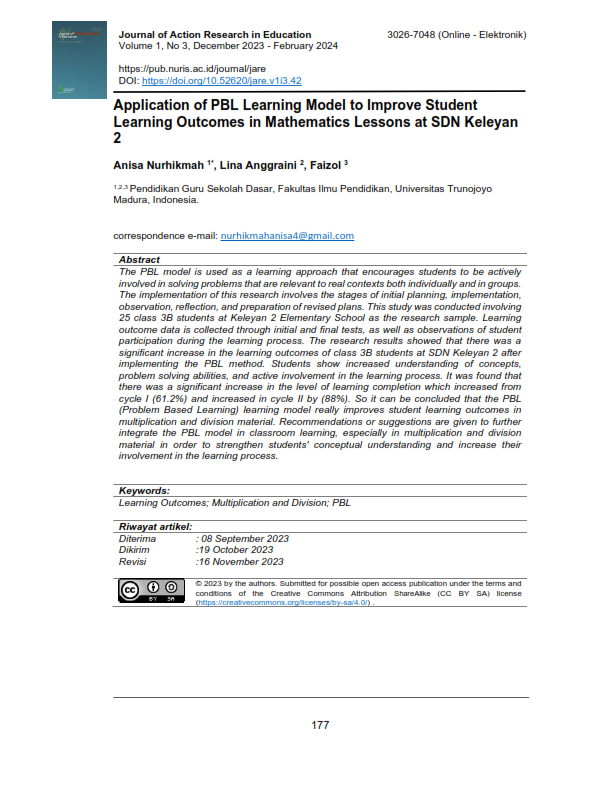Application of PBL Learning Model to Improve Student Learning Outcomes in Mathematics Lessons at SDN Keleyan 2
DOI:
https://doi.org/10.52620/jare.v1i3.39Keywords:
Learning Outcomes, Multiplication and Division, PBLAbstract
The PBL model is used as a learning approach that encourages students to be actively involved in solving problems that are relevant to real contexts both individually and in groups. The implementation of this research involves the stages of initial planning, implementation, observation, reflection, and preparation of revised plans. This study was conducted involving 25 class 3B students at Keleyan 2 Elementary School as the research sample. Learning outcome data is collected through initial and final tests, as well as observations of student participation during the learning process. The research results showed that there was a significant increase in the learning outcomes of class 3B students at SDN Keleyan 2 after implementing the PBL method. Students show increased understanding of concepts, problem solving abilities, and active involvement in the learning process. It was found that there was a significant increase in the level of learning completion which increased from cycle I (61.2%) and increased in cycle II by (88%). So it can be concluded that the PBL (Problem Based Learning) learning model really improves student learning outcomes in multiplication and division material. Recommendations or suggestions are given to further integrate the PBL model in classroom learning, especially in multiplication and division material in order to strengthen students' conceptual understanding and increase their involvement in the learning process.




